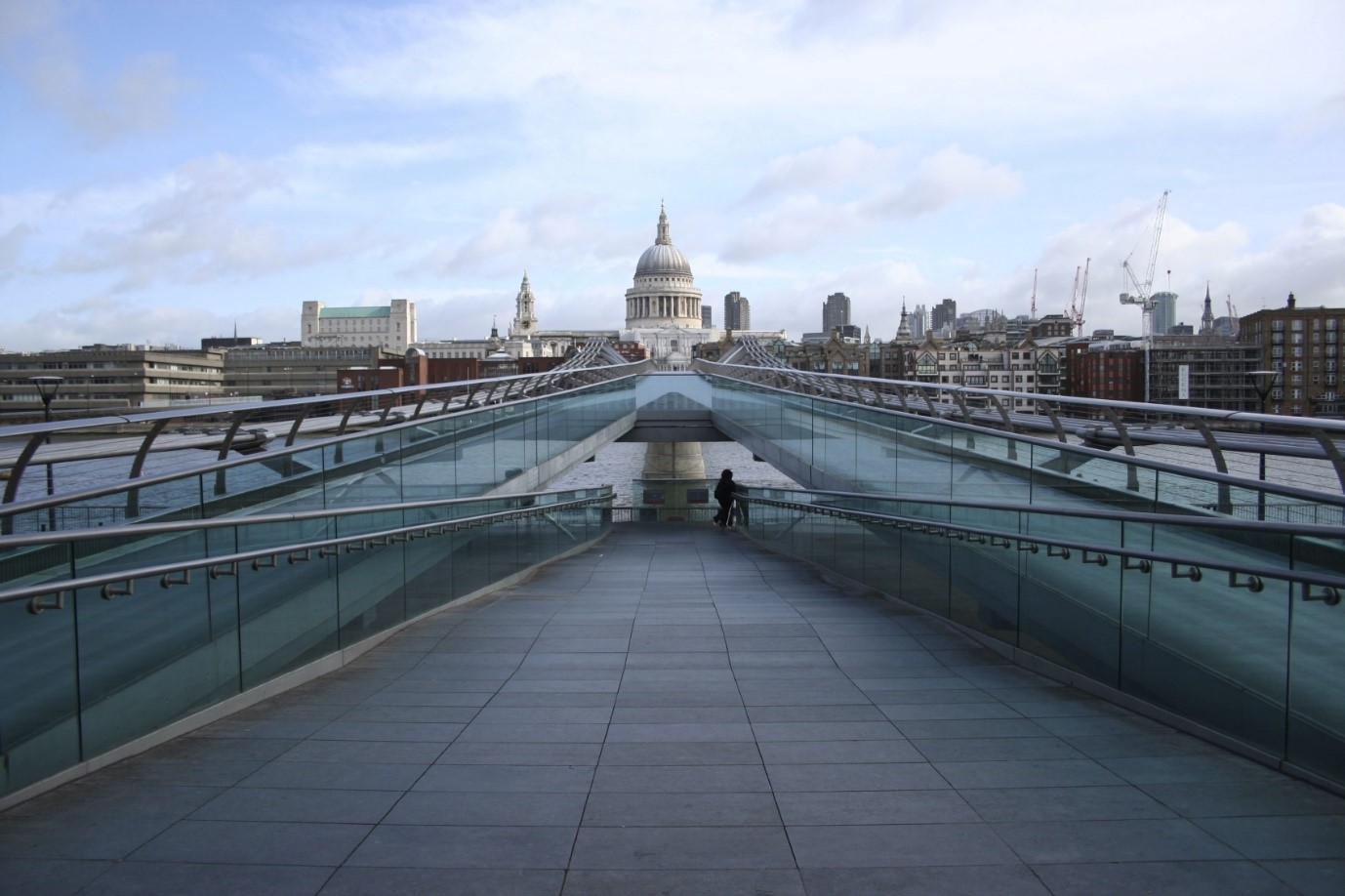Springs in Structures
Contents |
[edit] Introduction
Springs have many interesting uses and are found in various applications – from the lesser-known use within train tracks to the more obvious function in clicking pens.
Springs are also a vital component within many structures all over the world; from buildings to bridges and other types of large construction.
[edit] Suspension bridges
Many suspension bridges use springs to stabilise their structure.
An example of this is the Öresund Bridge – a combined motorway and railway bridge between Sweden and Denmark. There were vibration issues from the cables along the bridge in certain wind and temperature conditions. By installing dampers that contained compression springs (amongst other components) for the most exposed cables, the weight was supported and provided a moveable ring that regulated the air flow on each side.
Another suspension bridge to uses springs within its structure is the Millennium Bridge. At one point, it was nicknamed the Wobbly Bridge after the mass footfall meant that those on the southern and middle spans felt the bridge sway and twist. The problem was fixed with two different dampers; viscous dampers (similar to car shock absorbers); and tuned mass dampers, a large mass stiffened by springs.
[edit] Disaster prevention
Springs are used in some larger and taller structures, such as several-storey hotels and office blocks, building structures that are resilient to earthquakes in parts of the world that are exposed to tremors is vital.
One of the methods to prevent this kind of disaster is known as base isolation. This involves using spring systems or bearings that ‘float’ a building above its base foundations.
As the structure is attached to its foundations by a strong material, when a disaster such as an earthquake strikes, the structure can move slightly without being disconnected from its original foundations. This method has been in practice for years and has been used in numerous structures.
[edit] Building security
Springs and wire forms can be found in anti-climbing and safety measures for buildings, often in the form of fixing clips.
A well-known example of this is the Tate Modern. This structure uses fixing clips for holding faceplates (an attachment with slots for work to be mounted) onto corbels (a projection out of a wall to support the structure above it) that cover the first 15 metres up around the base of the gallery to establish an anti-climb zone.
In total, there were 650 springs created for the building with a 10-day turnaround as the scaffolding for the building was taken down sooner than anticipated.
--European Springs and Pressings Ltd 09:59, 27 Apr 2018 (BST)
[edit] Related articles on Designing Buildings Wiki
- Compression springs.
- Die springs.
- E-spring.
- Flat springs.
- Key qualities of springs.
- Spring materials.
- The importance of gas springs.
- Tension springs v torsion springs.
- Using springs in construction to prevent disaster.
- Large and Hot Coiled Compression Springs
- The Difference Between Tension and Torsion Springs
- The Multiple Uses of Compression Springs
- The Uses of Wire Forms Within the Construction Industry
- Types of spring.
Featured articles and news
RTPI leader to become new CIOB Chief Executive Officer
Dr Victoria Hills MRTPI, FICE to take over after Caroline Gumble’s departure.
Social and affordable housing, a long term plan for delivery
The “Delivering a Decade of Renewal for Social and Affordable Housing” strategy sets out future path.
A change to adoptive architecture
Effects of global weather warming on architectural detailing, material choice and human interaction.
The proposed publicly owned and backed subsidiary of Homes England, to facilitate new homes.
How big is the problem and what can we do to mitigate the effects?
Overheating guidance and tools for building designers
A number of cool guides to help with the heat.
The UK's Modern Industrial Strategy: A 10 year plan
Previous consultation criticism, current key elements and general support with some persisting reservations.
Building Safety Regulator reforms
New roles, new staff and a new fast track service pave the way for a single construction regulator.
Architectural Technologist CPDs and Communications
CIAT CPD… and how you can do it!
Cooling centres and cool spaces
Managing extreme heat in cities by directing the public to places for heat stress relief and water sources.
Winter gardens: A brief history and warm variations
Extending the season with glass in different forms and terms.
Restoring Great Yarmouth's Winter Gardens
Transforming one of the least sustainable constructions imaginable.
Construction Skills Mission Board launch sector drive
Newly formed government and industry collaboration set strategy for recruiting an additional 100,000 construction workers a year.
New Architects Code comes into effect in September 2025
ARB Architects Code of Conduct and Practice available with ongoing consultation regarding guidance.
Welsh Skills Body (Medr) launches ambitious plan
The new skills body brings together funding and regulation of tertiary education and research for the devolved nation.
Paul Gandy FCIOB announced as next CIOB President
Former Tilbury Douglas CEO takes helm.
UK Infrastructure: A 10 Year Strategy. In brief with reactions
With the National Infrastructure and Service Transformation Authority (NISTA).
























